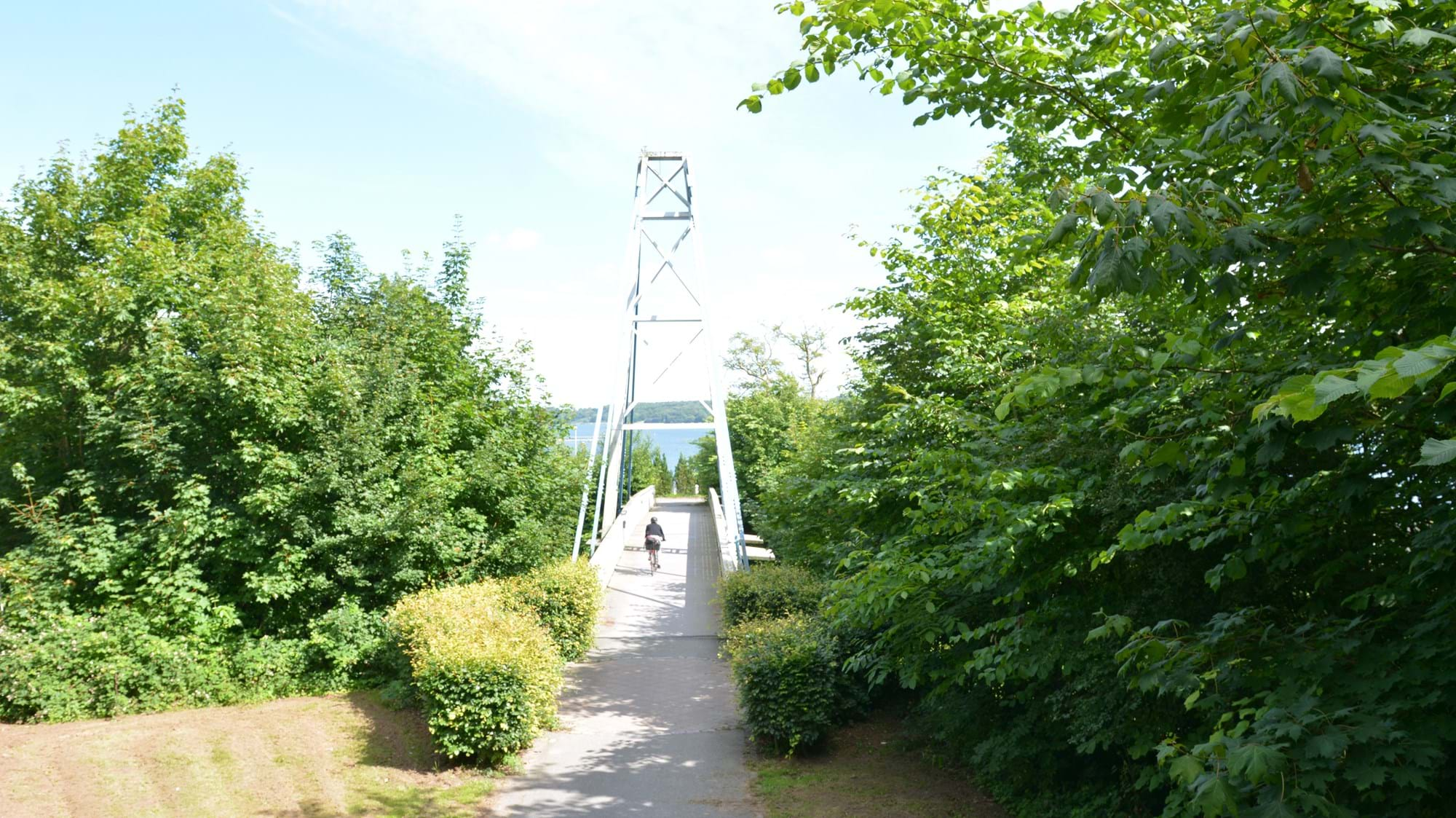

Fiberline Building Profiles A/S
Bridge deck
Scandinavia's first composite bridge - the Fiberline Bridge in Kolding, Denmark, was officially opened on 18 June, 1997. The new bridge, matching the strictest safety standards, has shown that GRP composites may represent the building material of the future for lightweight, maintenance-free bridges.
The Fiberline pedestrian and cyclist bridge was the first of its kind to cross a railway line. The busy railway line restricted installation work to only a few hours during nights between Saturdays and Sundays, and after only 3 such nights in May and June, the bridge was ready. The short installation time has illustrated the clear advantages of composites.
Composites are superior to traditional materials like steel and concrete in a number of ways:
The Fiberline bridge is an asymmetric cable-stayed bridge manufactured of Fiberline standard GRP profiles. Only the bolts for assembly and the abutments at the foundations are made of stainless-steel.
Watch the video below to see how the bridge came together.
Design, calculation and projecting was made in cooperation with the engineering company Rambøll, the municipality of Kolding and Fiberline.
The construction of the bridge is based on the Fiberline Design Manual, one of the most comprehensive manual for calculating structures made of pultrude GRP profiles. The Design manual also includes instructions of machining and assembly, chemical resistance, fire-saftety properties and environment & recycling.
Fiberline structural profiles are manufactured by pultrusion, a method which ensures consistent quality that can be reproduced.
Pultrusion is done by continual reinforced material being pulled through a guide where the fibres are placed precisely in relation to the profile cross section. The fibres are led through processing equipment where they are impregnated with the matrix material. The combined mixture of fibres and matrix is pulled on through the heated equipment where the profile is cured in its final geometry. The fully cured profile is then pulled forward to a floating suspended saw which cuts the profiles into defined lengths.
The process is friendly to the environment as the chemical reaction takes place in closed tools. Furthermore the energy consumption for producing Fiberline profiles is low – approx. 25% lower compared with structural profiles made of steel.
Fiberline possesses advanced laboratory and test facilities in which we test profiles properties, e.g. ultimate limit strength, stiffness and screw pull-out strength at certified test equipment.
Read more about testing of structural profiles
Each bridge part was machined and assembled at Fiberline. Composite material can be machined as easily and quickly as wood with machines and with ordinary power tools. Bridge sections are easily assembled with ordinary power tools.
Due to the low weight the three bridge sections could be transported to the site on a trailer. The low weight and the few sections made it possible to install the bridge during the restricted time of few hours during three nights which was essential to avoid disruption to traffic on the busy railway line.
The bridge was constructed of 12 different Fiberline standard profiles. The expected life time is minimum 100 years. The bridge, which is uninfluenced by rain, salt and sub-zero temperatures, is expected to require only cosmetic maintenance over the coming 50 years or more, reducing maintenance costs considerably compared to traditional bridges of steel, concrete or wood.
Fiberline structural profiles withstand temperatures from -40 to +70°C without important changes of strength, stiffness and impact strength. The thermal expansion coefficient is a bit lower than that of steel.
In 28 different places, the bridge has been provided with measuring equipment (strain gauges) for research, development and educational purposes. From the adjacent measuring station it is possible to observe tensions and deformations at changing loads and weather conditions, facilities expected to be of particular interest to universities and technical colleges. The weather station on top of the 18.5 m tower measures temperatures, wind velocity and direction.
Length, total 40 m
Length, bridge section 1 27 m
Length, bridge section 2 13 m
Width, total 3,2 m
Deck, total height 1.5 m
Deck, inside height 1.2 m
Tower, height 18.5 m
Total weight 12 tonnes
Designed load capacity 500 kg/m2
Designed vehicle weight capacity 5 tones
Designed wheel pressure 1,8 tons
Designed Maximum deflection L/200 13 cm
Number of stays 8
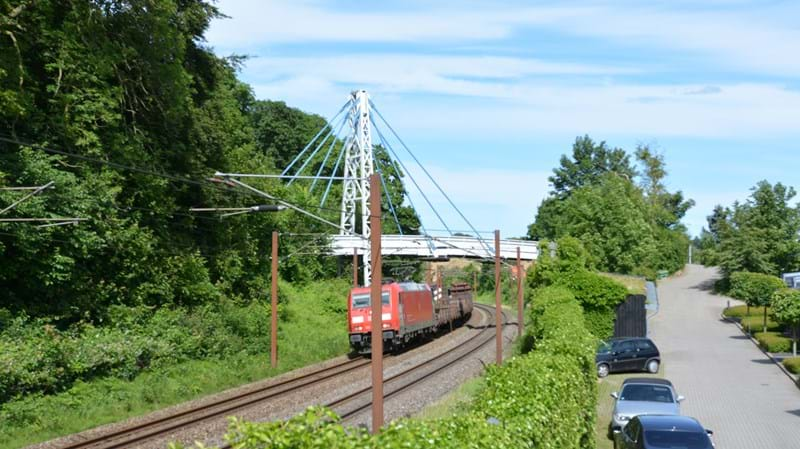




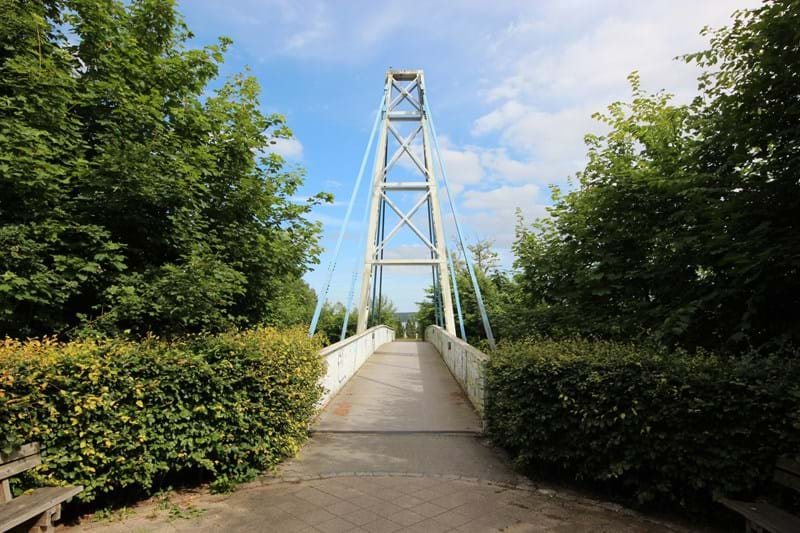




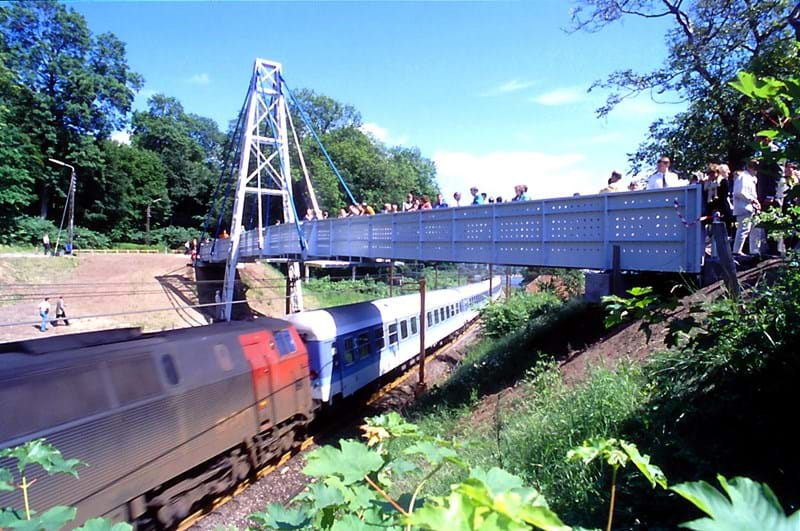
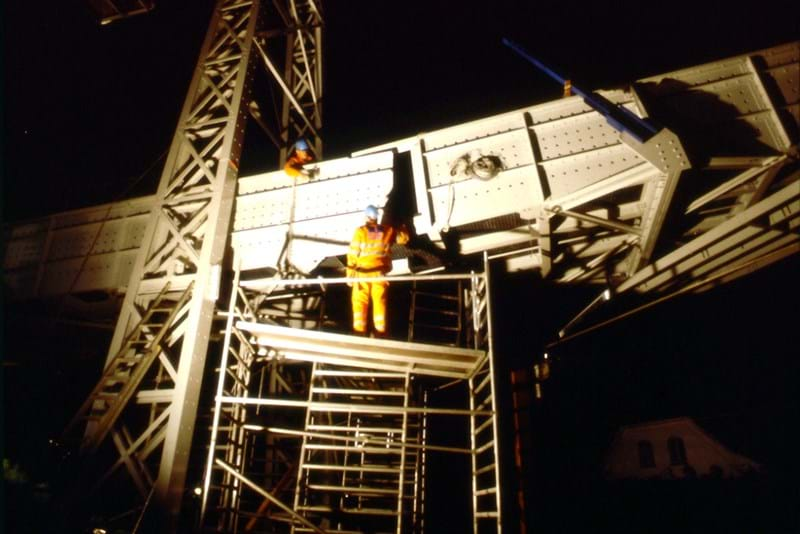












Learn more about our composite bridges.